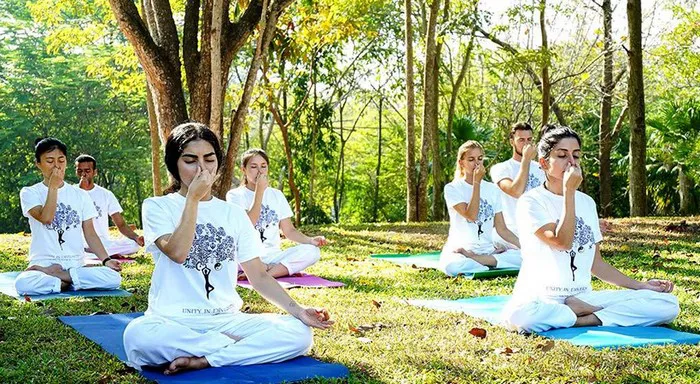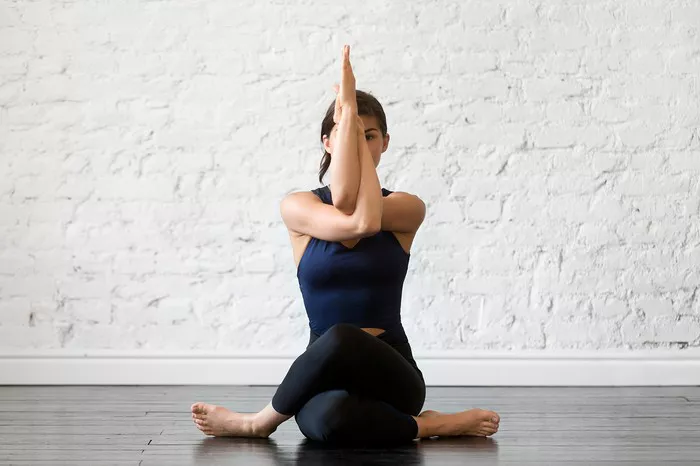Humming yoga breathing is a powerful practice that combines the benefits of breath control, sound, and meditation. This technique not only calms the mind but also promotes overall well-being. In this comprehensive guide, we will explore the origins, benefits, techniques, and applications of humming yoga breathing, helping you to integrate this practice into your daily life.
1. Understanding Humming Yoga Breathing
What is Humming Yoga Breathing?
Humming yoga breathing, often referred to as “bhramari” in traditional yoga, involves producing a humming sound during exhalation. This technique is used to enhance the practice of pranayama (breath control) by incorporating sound, which can deepen relaxation and improve focus.
Historical Background
The roots of humming yoga breathing can be traced back to ancient yogic texts and practices. Humming has been utilized in various cultures for centuries, often as a form of meditation or spiritual expression. Its connection to sound healing has gained attention in modern wellness practices, highlighting its therapeutic benefits.
2. The Science Behind Humming
How Humming Affects the Body
Humming generates vibrations that resonate throughout the body, stimulating the vagus nerve and promoting relaxation. The vibrations can help release tension in the throat and chest, enhancing respiratory function and overall vitality.
The Role of Vibration and Sound
Sound has a profound impact on our physical and emotional states. Humming produces low-frequency sound waves that can reduce stress, lower heart rate, and even alleviate pain. This scientific understanding underscores the importance of sound in yoga practices.
3. Benefits of Humming Yoga Breathing
Physical Benefits
Enhanced Respiratory Function: Humming encourages deep, diaphragmatic breathing, improving lung capacity and oxygen intake.
Relaxation of Muscles: The vibrations from humming can release tension in the neck and shoulders.
Improved Circulation: The act of humming stimulates blood flow, promoting overall cardiovascular health.
Mental and Emotional Benefits
Stress Reduction: Humming can activate the body’s relaxation response, decreasing anxiety levels.
Increased Focus: The rhythmic nature of humming helps clear the mind, improving concentration and mental clarity.
Emotional Release: Humming can serve as a cathartic outlet for emotions, allowing for a sense of relief and emotional balance.
Spiritual Benefits
Connection to Self: The practice fosters a deeper connection with one’s inner self, enhancing self-awareness.
Meditative Experience: Humming can facilitate a meditative state, promoting mindfulness and spiritual growth.
See also: Ouija Breathing Yoga: Mystical Practice of Breath and Energy
4. How to Practice Humming Yoga Breathing
Preparing for Your Practice
Before starting, find a quiet space where you can sit or lie comfortably. Ensure your body is relaxed and your mind is focused.
Basic Techniques
Begin with Deep Breathing: Inhale deeply through your nose, filling your lungs.
Exhale While Humming: As you exhale, produce a gentle humming sound. Focus on the vibrations in your chest and throat.
Lengthen the Humming: Try to extend the duration of the hum, allowing it to resonate throughout your body.
Advanced Techniques
Combine with Visualization: While humming, visualize a calming scene or mantra to enhance relaxation.
Incorporate Asanas: Perform gentle yoga poses while practicing humming to deepen the mind-body connection.
Experiment with Pitch: Play with different pitches and tones while humming to explore their effects on your state of mind.
5. Incorporating Humming Yoga Breathing into Daily Life
Short Practices for Busy Schedules
Morning Routine: Start your day with five minutes of humming to energize your mind and body.
Stress Relief Breaks: Take a few moments throughout your day to hum quietly, reducing stress and refocusing your energy.
Long Sessions for Deep Relaxation
Evening Wind-Down: Dedicate time in the evening for a longer humming practice, possibly combining it with me ditation or gentle stretching.
Guided Humming Sessions: Join classes or online sessions focused on humming yoga breathing to enhance your practice.
6. Common Mistakes and How to Avoid Them
Misconceptions about Humming
Many believe that humming should be loud or forceful; however, gentle humming is often more effective. Focus on the quality of sound rather than volume.
Tips for Effective Practice
Stay Relaxed: Ensure your body is relaxed, avoiding tension in your throat or chest.
Be Mindful: Maintain awareness of your breath and the sensations in your body as you hum.
7. Humming Yoga Breathing and Other Yoga Practices
Combining Humming with Asanas
Incorporating humming into your yoga practice can enhance the benefits of each pose. Experiment with humming during poses that open the chest or encourage deep breathing, such as:
Cat-Cow Pose: Humming during this flow can enhance spinal flexibility and breathing.
Bridge Pose: Humming while in this pose can stimulate the heart chakra.
Humming in Meditation and Mindfulness
Integrate humming into your meditation practice by using it as a focal point. The vibrations can anchor your mind, making it easier to stay present and focused.
8. Personal Experiences and Testimonials
Transformative Stories from Practitioners
Many practitioners report significant improvements in their mental clarity and emotional well-being after incorporating humming yoga breathing into their routines. Testimonials highlight stories of stress reduction, enhanced creativity, and deeper spiritual connections.
9. Conclusion
Humming yoga breathing is a versatile and powerful practice that offers a multitude of benefits for the mind, body, and spirit. Whether you are looking to reduce stress, enhance focus, or deepen your yoga practice, this technique can serve as a valuable tool. Embrace the art of humming and discover the transformative effects it can have on your life.
This comprehensive guide to humming yoga breathing invites you to explore the intersection of sound, breath, and mindfulness. Start your journey today and unlock the potential of this ancient practice in your daily life.
You Might Be Interested In
Exploring Pranayama in the Patanjali Yoga Sutras























